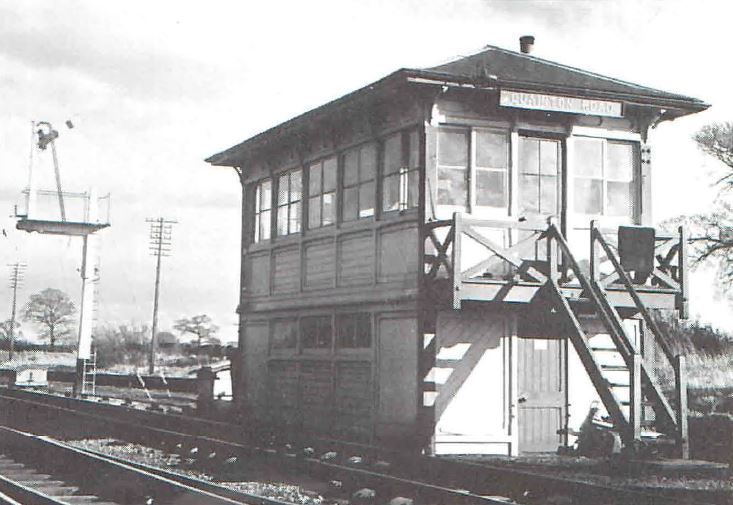
BRC Website Home
Quainton Virtual Stockbook
Quainton News Archive -
Quainton News No. 12 - June 1972
Harlington Signal Box
Quainton Signalling

BRC Website Home
Quainton Virtual Stockbook
Quainton News Archive -
Quainton News No. 12 - June 1972
Harlington Signal Box
Quainton Signalling

Photo: |
|
When the Great Central Railway's London extension was opened in 1899 a double track junction was made with the Metropolitan Railway a short distance north of Quainton Road station and a signal box was provided to work the junction points and signals. At first this box was situated in the vee of the junction but it was soon moved to the down side. At Quainton Road station crossovers and connections were provided to the up side transfer yard where traffic was interchanged between the GCR and the Metropolitan and also to the down yard and the Brill branch. The station signal box illustrated opposite had 55 levers and on the 27th November 1921 it took over the working of the junction. On 17th June 1920 it had been resolved by the Met and G C Joint Committee that a scheme be approved for carrying out signalling alterations at Quainton Road to enable the junction connections and signalling to be worked from Quainton Road station at an estimated expenditure of £3,356. Later in the year additional expenditure was authorised for the provision of switching at the signal boxes and the establishment of telephonic connection between Aylesbury North and Grendon Underwood signal boxes to enable the Quainton boxes to be closed out of circuit. The closing of the junction box saved £832 a year. In 1930 telephones were installed on the Met & GC line and the single needle instruments formerly in use were removed and the circuits converted. In that year alterations were also made to the tracks at the junction at the request of the LNER so that their main line was straightened and the Verney branch points were on a curve. Prior to 1930 the LNER trains were subjected to a speed limit of 25 mph on the 'dog leg' at the junction, the pronounced kink being a relic of the days when the main lines were the Metropolitan's tracks to Verney. The mixed duties of the signal box at Quainton in handling Met/GC Committee and LNER trains was recognised by the accountants and the traffic attributable to each company was assessed from time to time. In 1927 the split was 5/34 to the LNER and 29/34 to the Joint Committee. Quainton Road signal box was closed in 1967. Unfortunately it was destroyed before we came to the site and the dismantled box you may have seen originated from Grove. It would be good to hear from anybody who worked in Quainton box or who could recall the details of its operation. |
|
Notes: Notes: Reference: |
Text © Quainton Railway Society / Photographs © Quainton Railway Society or referenced photographer
Email Webmaster
Page Updated: 17 October 2017